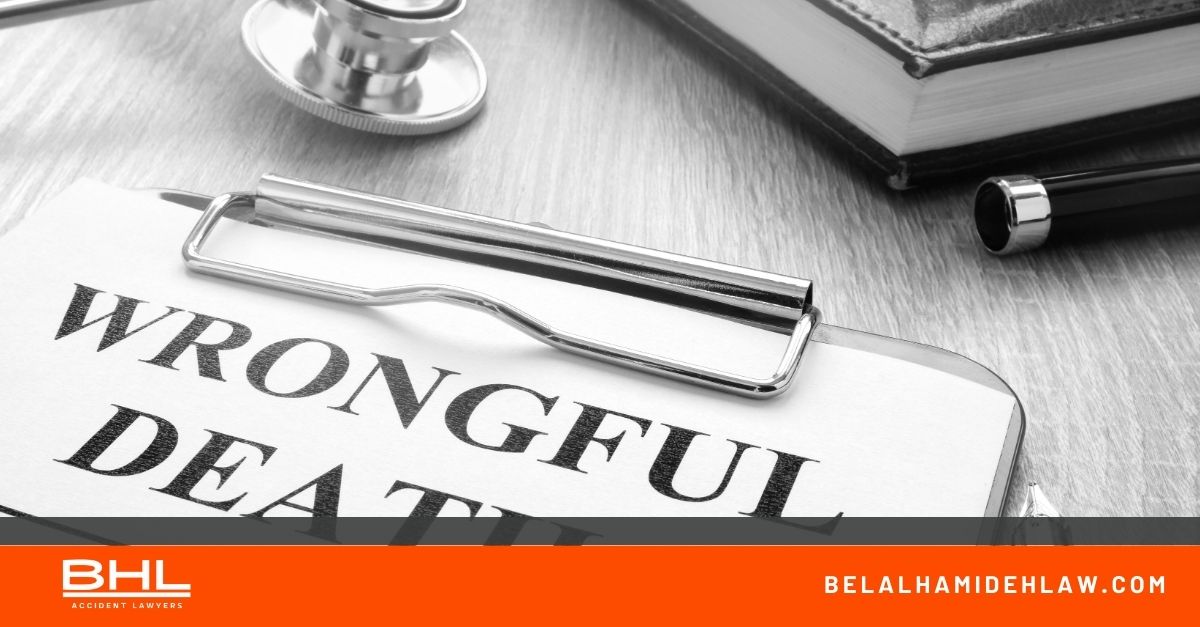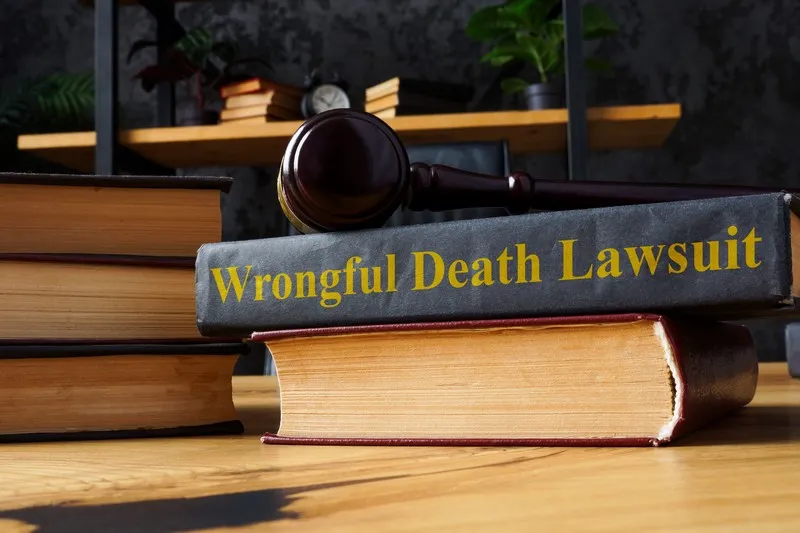Two types of damages that can be pursued in wrongful death suits: economic and non-economic damages.
When we speak of economic damages, we’re referring to definite, quantifiable financial losses that transpire as a result of the tragic event. These encompass expenditures directly related to the wrongful death including funeral bills, medical costs, and the income that your loved one would have potentially brought in had they lived their full life.

On the other hand, non-economic damages pertain to the losses which are harder to assign a monetary value. They address those intangible aspects that are often overlooked but are equally important. These include the emotional trauma experienced by the family and loved ones, the loss of companionship which can be quite sizeable, particularly for spouses and children who must now navigate life without the presence and guidance of their cherished family member.
Quantifying non-economic damages can indeed prove to be challenging due to their highly subjective nature. However, rest assured, Belal is committed to ensuring that each of our clients receive the maximum possible compensation. This entails striving for the highest feasible remuneration not only for the economic damages but also for the often immeasurable non-economic damages.
It is crucial to remember that the pursuit of a wrongful death claim is not merely about financial compensation. It is about seeking justice for your loved one and holding the responsible party accountable for their actions, and as your wrongful death attorney, Belal Hamideh stands committed to that cause.
Recognizing the Role a Wrongful Death Lawyer Plays in Your Legal Process
Encountering the unexpected demise of a dear one due to someone else’s careless act can bring about extreme sorrow. The untimely end of a person you held dear may be a result of a negligent action from another party. While no amount of funds can truly compensate for your emotional loss, it’s vital to know your prerogatives in advancing a safeguarding claim. Building a convincing lawsuit with the help of a qualified wrongful death legal representative can aid you in securing this financial claim. This fiscal compensation can be helpful in covering costs associated with the funeral, medical bills, and emotional distress, offering some financial stability as you navigate this tragic event.

Introducing Belal Hamideh, a highly accomplished wrongful death lawyer located in California. He has adeptly handled a multitude of wrongful death cases, with his vast experience acting as a crucial resource in your pursuit of justice. With his extensive experience, he passionately represents you, ensuring you receive the maximum allowable compensation for your suffering. He also offers a free case evaluation, where he assesses the potential value of your claim and the ways he can be of assistance.
Understanding the Concept of Wrongful Death
The law in California establishes that wrongful death is a result of someone’s wrongful act leading to another individual’s passing away. Such actions can span from irresponsible or reckless behaviors to intentional harm. If the act was deliberate, it could initiate criminal proceedings against the person responsible.
In case you find yourself in a similar dilemma, you might have a significant claim for a wrongful death lawsuit. If there are any doubts related to your eligibility to initiate a lawsuit, it would be wise to consult with a qualified lawyer.
Building a Wrongful Death Lawsuit
To formulate a convincing wrongful death claim, there are four specific elements that need validation. The foremost aspect is providing evidence that the defendant’s negligent, reckless, or irresponsible behavior played a role in the death of your loved one. It’s crucial to acknowledge that if the actions of the defendant were a contributory cause, even marginally, to the death, you have a valid claim.
The following aspect is to demonstrate that the defendant owed a duty to the victim—your departed loved one. This duty varies depending on the circumstances, for example, a healthcare provider’s duty to treat a patient or a motorist’s duty to follow traffic rules.
Subsequently, it must be established that the defendant’s negligence of this due care resulted in the death of your loved one. Finally, evidence needs to be provided to substantiate that the passing away of your loved one led to measurable losses that encompass medical bills, funeral costs, loss of income or potential earnings, and your mental anguish. This also includes loss of guidance, protection, and inheritance.
Embarking on the path of a wrongful death lawsuit can be filled with complexities and challenges. However, a seasoned lawyer like Belal Hamideh is ready to guide you through this procedure. With his profound understanding and expertise in dealing with California wrongful death cases, Belal can provide the robust representation you need to fight for the justice you truly deserve.
Our firm’s commitment remains steadfast in ensuring that our clients clinch the peak possible restitution.
Scrutinizing Probable Compensation Categories in Unlawful Demise Lawsuits
The reparation in these lawsuits is often contingent upon various aspects like the life expectancy of the victim at the time of the wrongful action, the longevity of the claimant, and others.
Economic damages traditionally encompass funeral or interment expenses, the lost economic assistance that the heirs were projected to receive, the deprivation of household services, and anticipated gifts or benefits from the departed.
Inversely, non-economic damages address the emotional turmoil instigated by the loss of a beloved. This could encompass deprivation of companionship, affection, safeguarding, moral support, guidance, instruction, and loss of consortium.
Nonetheless, it’s essential to bear in mind that under California law, punitive damages are not permitted for wrongful death lawsuits. The need would arise to launch a survival action alongside the unlawful death claim to seek punitive damages if they originate from the same wrongful act.
During your preliminary discussion with Belal, he will offer clarity into the probable outcomes of your case. He will leverage his vast experience to formulate an effective plan intended to position you for the most beneficial possible results.
Identifying the Contenders for Restitution in Cases of Illegal Demise
Grasping a clear understanding of the legislative bounds defining who is eligible to claim restitution in an illegal death lawsuit is supremely essential. Typically, the surviving spouse and children of the departed are the primary contenders eligible to file an illegal death claim. However, in instances where the departed does not leave behind any dependents or immediate family, the parents may be recognized as the beneficiaries.
The sequence of prerequisites for eligibility to claim restitution in an illegal death lawsuit can indeed be complicated. This often leaves many enveloped in a veil of uncertainty concerning their eligibility, the prospective restitution they can claim, and more. To successfully steer through this intricate expedition, it is strongly advised to seek the advice of a legal professional who excels in illegal death cases, such as Belal Hamideh.
California Wrongful Death Laws
These laws may pertain to your situation. If you have further questions, contact Belal.
California Code, Code of Civil Procedure – CCP § 377.60
A cause of action for the death of a person caused by the wrongful act or neglect of another may be asserted by any of the following persons or by the decedent’s personal representative on their behalf:
(a) The decedent’s surviving spouse, domestic partner, children, and issue of deceased children, or, if there is no surviving issue of the decedent, the persons, including the surviving spouse or domestic partner, who would be entitled to the property of the decedent by intestate succession.If the parents of the decedent would be entitled to bring an action under this subdivision, and the parents are deceased, then the legal guardians of the decedent, if any, may bring an action under this subdivision as if they were the decedent’s parents.
(b)(1) Whether or not qualified under subdivision (a), if they were dependent on the decedent, the putative spouse, children of the putative spouse, stepchildren, parents, or the legal guardians of the decedent if the parents are deceased.
(2) As used in this subdivision, “putative spouse” means the surviving spouse of a void or voidable marriage who is found by the court to have believed in good faith that the marriage to the decedent was valid.
(c) A minor, whether or not qualified under subdivision (a) or (b), if, at the time of the decedent’s death, the minor resided for the previous 180 days in the decedent’s household and was dependent on the decedent for one-half or more of the minor’s support.
(d) This section applies to any cause of action arising on or after January 1, 1993.
(e) The addition of this section by Chapter 178 of the Statutes of 1992 was not intended to adversely affect the standing of any party having standing under prior law, and the standing of parties governed by that version of this section as added by Chapter 178 of the Statutes of 1992 shall be the same as specified herein as amended by Chapter 563 of the Statutes of 1996.
(f)(1) For the purpose of this section, “domestic partner” means a person who, at the time of the decedent’s death, was the domestic partner of the decedent in a registered domestic partnership established in accordance with subdivision (b) of Section 297 of the Family Code.
(2) Notwithstanding paragraph (1), for a death occurring prior to January 1, 2002, a person may maintain a cause of action pursuant to this section as a domestic partner of the decedent by establishing the factors listed in paragraphs (1) to (6), inclusive, of subdivision (b) of Section 297 of the Family Code, as it read pursuant to Section 3 of Chapter 893 of the Statutes of 2001, prior to its becoming inoperative on January 1, 2005.
(3) The amendments made to this subdivision during the 2003-04 Regular Session of the Legislature are not intended to revive any cause of action that has been fully and finally adjudicated by the courts, or that has been settled, or as to which the applicable limitations period has run.
California Code, Code of Civil Procedure – CCP § 335.1
Within two years: An action for assault, battery, or injury to, or for the death of, an individual caused by the wrongful act or neglect of another.
California Code, Code of Civil Procedure – CCP § 377.61
In an action under this article, damages may be awarded that, under all the circumstances of the case, may be just, but may not include damages recoverable under Section 377.34. The court shall determine the respective rights in an award of the persons entitled to assert the cause of action.
California Code, Code of Civil Procedure – CCP § 377.34
(a) In an action or proceeding by a decedent’s personal representative or successor in interest on the decedent’s cause of action, the damages recoverable are limited to the loss or damage that the decedent sustained or incurred before death, including any penalties or punitive or exemplary damages that the decedent would have been entitled to recover had the decedent lived, and do not include damages for pain, suffering, or disfigurement.
(b) Notwithstanding subdivision (a), in an action or proceeding by a decedent’s personal representative or successor in interest on the decedent’s cause of action, the damages recoverable may include damages for pain, suffering, or disfigurement if the action or proceeding was granted a preference pursuant to Section 36 before January 1, 2022, or was filed on or after January 1, 2022, and before January 1, 2026.
(c) A plaintiff who recovers damages pursuant to subdivision (b) between January 1, 2022, and January 1, 2025, inclusive, shall, within 60 days after obtaining a judgment, consent judgment, or court-approved settlement agreement entitling the plaintiff to the damages, submit to the Judicial Council a copy of the judgment, consent judgment, or court-approved settlement agreement, along with a cover sheet detailing all of the following information:
(1) The date the action was filed.
(2) The date of the final disposition of the action.
(3) The amount and type of damages awarded, including economic damages and damages for pain, suffering, or disfigurement.
(d)(1) On or before January 1, 2025, the Judicial Council shall transmit to the Legislature a report detailing the information received pursuant to subdivision (c) for all judgements, consent judgements, or court-approved settlement agreements rendered from January 1, 2022, to July 31, 2024, inclusive, in which damages were recovered pursuant to subdivision (b). The report shall comply with Section 9795 of the Government Code.
(2) This subdivision shall become inoperative on January 1, 2029, pursuant to Section 10231.5 of the Government Code.
(e) Nothing in this section alters Section 3333.2 of the Civil Code.
(f) Nothing in this section affects claims brought pursuant to Chapter 11 (commencing with Section 15600) of Part 3 of Division 9 of the Welfare and Institutions Code.
